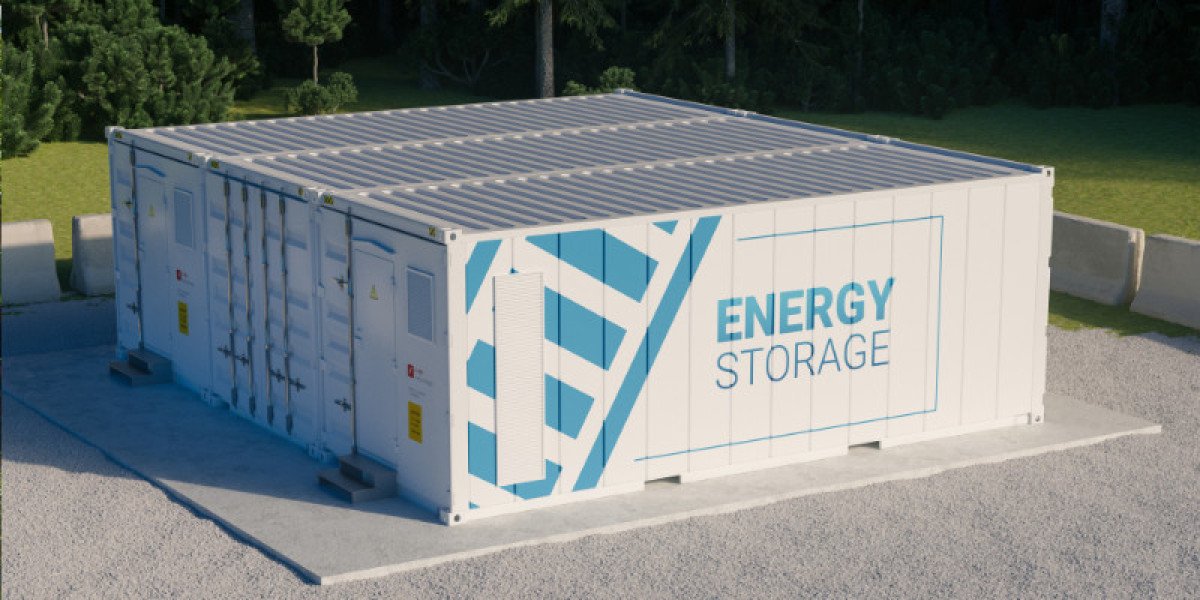The energy storage market in Australia is experiencing rapid expansion, with a projected Compound Annual Growth Rate (CAGR) of 16.70% from 2024 to 2032. This growth is largely driven by the country's transition towards cleaner energy sources, increasing investment in renewable energy projects, and supportive government policies and incentives aimed at enhancing the adoption of energy storage systems. As Australia accelerates its commitment to renewable energy, the role of energy storage systems is becoming increasingly vital in stabilizing the grid and ensuring a reliable power supply.
In this article, we will explore the key drivers of growth in the Australian energy storage market, the technologies that are shaping the future of energy storage, the challenges faced by the industry, and the outlook for the market between 2024 and 2032.
1. Overview of the Australia Energy Storage Market
Energy storage refers to technologies and systems that capture energy when it is available and release it when needed. These systems can store electricity generated from renewable sources such as solar, wind, and hydro, enabling more efficient energy use and providing backup power during periods of high demand or when renewable generation is low.
In Australia, energy storage systems are seen as essential for supporting the country's renewable energy targets and net-zero emissions goals. With Australia's abundance of natural resources, such as sunlight and wind, the country is well-positioned to harness renewable energy. However, the intermittent nature of these resources means energy storage is necessary to balance supply and demand.
Key energy storage technologies include:
- Battery Energy Storage Systems (BESS): These systems store electricity in batteries, most commonly using lithium-ion batteries.
- Pumped Hydro Storage: Involves storing energy by pumping water to a higher elevation and releasing it to generate electricity when required.
- Thermal Energy Storage: This stores energy in the form of heat for later use.
- Flywheel Storage: Uses rotational energy to store electricity.
2. Drivers of Growth in the Australian Energy Storage Market
The Australian energy storage market is poised for substantial growth due to several key factors:
2.1 Government Policies and Incentives
Australia’s commitment to reducing carbon emissions and increasing the share of renewables in its energy mix has been a driving force behind the growing demand for energy storage solutions. Federal and state governments have introduced a range of policies, incentives, and subsidies aimed at supporting energy storage adoption.
Some of the government initiatives driving the market include:
- National Energy Guarantee (NEG): A policy framework that aims to ensure reliable and affordable energy supply while reducing carbon emissions. The NEG encourages the development of energy storage solutions to stabilize the grid.
- State-level incentives: Various Australian states, such as South Australia and Victoria, have introduced specific policies to encourage the installation of home and commercial energy storage systems.
- Battery Rebate Programs: The Australian government has rolled out programs that offer rebates for homeowners and businesses installing energy storage systems, reducing the initial cost and improving accessibility for consumers.
2.2 Increase in Renewable Energy Projects
Australia has set ambitious goals for renewable energy capacity and is actively investing in large-scale projects that incorporate energy storage. With the renewable energy sector growing rapidly, especially in solar power and wind energy, energy storage becomes crucial to addressing intermittency issues.
Several large-scale renewable energy projects, such as solar farms paired with battery storage systems, have been launched or are in development, further fueling demand for energy storage solutions. These projects include collaborations between major energy providers and battery manufacturers to store excess energy generated during the day for use during peak demand hours.
2.3 Decrease in Energy Storage Costs
Over the past decade, the cost of battery storage technology, particularly lithium-ion batteries, has significantly decreased. This decline in costs is driven by advancements in technology, economies of scale, and global supply chain improvements. As energy storage becomes more affordable, both residential and commercial customers are increasingly adopting these systems as part of their energy infrastructure.
For consumers, this reduction in costs allows for more widespread adoption of residential solar energy storage systems. For businesses and utilities, it provides a way to scale up their energy storage infrastructure at a more economical price.
2.4 Growing Demand for Grid Stability and Reliability
As more renewable energy projects are deployed across Australia, grid stability becomes a growing concern. Energy storage systems provide a solution to this challenge by offering grid operators the ability to balance supply and demand, store excess energy during low-demand periods, and discharge stored energy when needed. This helps maintain grid reliability, especially during periods of peak demand or when renewable energy generation is low.
In addition, the increasing frequency of extreme weather events due to climate change has prompted a need for reliable energy solutions, with energy storage providing resilience during outages or disruptions to the power supply.
3. Key Technologies Shaping the Future of the Energy Storage Market
Several energy storage technologies are evolving and influencing the Australian market:
3.1 Battery Energy Storage Systems (BESS)
Battery storage technology, especially lithium-ion batteries, is one of the most widely adopted energy storage solutions globally. Lithium-ion batteries are favored for their high energy density, efficiency, and relatively low cost. These systems are used in everything from residential solar systems to large-scale utility projects.
Notable Projects:
- Hornsdale Power Reserve: Located in South Australia, this is one of the largest lithium-ion battery storage systems in the world. It plays a significant role in stabilizing the local grid and supporting renewable energy integration.
- Victoria Big Battery: Another large-scale project aimed at enhancing grid stability and accelerating the transition to renewable energy.
3.2 Pumped Hydro Storage
Pumped hydro storage is one of the oldest and most established forms of large-scale energy storage. It involves pumping water to an elevated reservoir during periods of low energy demand and releasing it to generate electricity when demand is high. This technology offers substantial storage capacity, making it ideal for large-scale applications. Australia is investing in new pumped hydro projects to complement renewable energy generation.
3.3 Thermal Energy Storage
Thermal energy storage uses heat to store energy, which is later converted back to electricity. It offers another alternative for balancing supply and demand, particularly for industries that require constant energy supply. This technology is still in the early stages in Australia, but it is expected to grow as part of a diversified energy storage strategy.
3.4 Flywheel Storage
Flywheel technology stores energy in the form of rotational kinetic energy. While it is not as widely used as other storage technologies, it has potential for providing rapid-response energy solutions and grid support. Flywheel storage could see increased adoption in Australia, particularly for small-scale applications and balancing renewable energy generation.
4. Challenges in the Australian Energy Storage Market
Despite the growth potential, there are several challenges facing the energy storage market in Australia:
4.1 High Initial Capital Investment
While the cost of energy storage systems has decreased, the initial capital investment for large-scale systems can still be high. For both residential and commercial installations, the cost of purchasing and installing energy storage systems can deter potential customers. However, this is expected to decrease over time as technologies evolve and economies of scale take effect.
4.2 Limited Charging and Discharging Efficiency
Some energy storage technologies still face challenges related to charging and discharging efficiency. For instance, while lithium-ion batteries are efficient, they still lose some capacity over time due to cycle degradation. This can affect long-term performance and may require periodic replacement of battery systems.
4.3 Infrastructure Development and Integration
The integration of energy storage systems into the broader energy infrastructure presents challenges. Energy storage must be compatible with existing grid systems and scaled to meet regional energy needs. The expansion of charging infrastructure, particularly for electric vehicles (EVs), is also essential for creating a cohesive energy storage ecosystem in Australia.
5. Future Outlook of the Australian Energy Storage Market
The future outlook for the Australian energy storage market remains positive, with strong growth expected over the next decade. By 2032, the market is projected to see significant developments across both residential and commercial sectors. The transition to renewable energy, combined with the decrease in costs and advancements in technology, will further fuel the demand for energy storage solutions.
Key growth drivers include:
- Increased investment in large-scale renewable energy projects integrated with storage solutions.
- Expansion of government incentives and subsidy programs to make energy storage more affordable.
- Technological advancements in battery storage, thermal storage, and pumped hydro systems.
- Increased demand for off-grid and microgrid solutions in remote areas, leveraging energy storage for reliable power supply.
6. Market Segmentation: Residential, Commercial, and Industrial Sectors
The Australian energy storage market is experiencing growth across different segments, with each sector having unique needs and opportunities. Understanding the market segmentation helps in identifying the various demand drivers for energy storage technologies:
6.1 Residential Sector
The residential sector has witnessed increasing adoption of home energy storage systems, particularly solar batteries, which allow homeowners to store excess solar energy generated during the day for later use. The popularity of these systems has surged due to the following reasons:
- Cost savings: Residential solar batteries allow homeowners to maximize their solar energy usage, reducing dependence on the grid and minimizing electricity bills.
- Energy independence: Homeowners gain more control over their energy consumption, reducing reliance on utility companies and increasing energy security.
- Government rebates: Various government incentives and rebates make energy storage systems more affordable for homeowners, accelerating their adoption.
- Increasing demand for electric vehicles: As Australians increasingly adopt electric vehicles (EVs), the integration of home energy storage systems with EV charging stations is creating new synergies in the residential sector.
6.2 Commercial and Industrial Sector
Commercial and industrial sectors are embracing energy storage solutions as part of their strategies to reduce energy costs, enhance grid stability, and achieve sustainability goals. Energy storage systems can benefit businesses by:
- Demand management: Energy storage systems help businesses manage energy consumption by discharging stored energy during peak demand times when electricity prices are higher.
- Energy resilience: Energy storage solutions offer backup power during grid outages, ensuring continuity of operations, especially for critical industries such as healthcare, data centers, and manufacturing.
- Sustainability targets: Many companies are under increasing pressure to meet Net-Zero Emissions goals and are leveraging energy storage to integrate renewable energy into their operations more efficiently.
- Increased scalability: Commercial energy storage solutions, such as large-scale battery energy storage systems (BESS), can be scaled up as businesses expand their energy needs.
6.3 Utility-Scale Energy Storage
Utility-scale energy storage solutions are becoming increasingly popular in Australia, particularly with large-scale renewable energy projects. These solutions are designed to support the energy grid by providing:
- Grid stability: As renewable energy generation can be intermittent, large-scale energy storage ensures that excess energy from solar and wind farms is captured and stored for use during low-generation periods.
- Frequency regulation: Energy storage systems are used for frequency regulation to ensure the grid operates at optimal levels.
- Integration with renewable energy sources: Utility-scale energy storage is being deployed alongside large renewable energy projects, enhancing the capacity of wind and solar farms by stabilizing power output.
7. Trends in Energy Storage Technologies in Australia
The energy storage landscape in Australia is constantly evolving, with several key trends shaping the future of the industry:
7.1 Energy Storage and Electric Vehicles (EVs)
The rapid rise in electric vehicles (EVs) in Australia is presenting new opportunities for energy storage. As the country transitions to cleaner transportation, the connection between EVs and energy storage technologies becomes more significant. The main trends include:
- Vehicle-to-grid (V2G) technology: With V2G technology, electric vehicles can not only consume energy but also supply it back to the grid, acting as mobile energy storage units. This helps balance supply and demand, especially during peak periods.
- Home charging integration: As more households adopt EVs, integrating energy storage systems with EV chargers provides additional capacity to store excess solar energy for vehicle charging, reducing the overall reliance on the grid.
- Fleet electrification: Commercial and logistics companies are adopting EV fleets and incorporating energy storage to reduce fuel costs and decrease their environmental footprint.
7.2 Advancements in Battery Technology
Battery technology is central to the Australian energy storage market. Several advancements are expected to drive further growth:
- Solid-state batteries: Solid-state batteries offer higher energy densities and improved safety compared to traditional lithium-ion batteries. While still in the early stages of development, these batteries are expected to reduce the overall cost and enhance the lifespan of energy storage systems.
- Flow batteries: Flow batteries, which store energy in liquid form, are being researched as alternatives to traditional lithium-ion technology. They offer long-duration storage and could potentially reduce costs for large-scale energy storage projects.
- Recycling and second-life batteries: The development of more efficient recycling processes for batteries is crucial to the sustainability of energy storage. Additionally, second-life batteries—used batteries from electric vehicles or other systems—are being repurposed for stationary storage applications, providing a more cost-effective and eco-friendly alternative to new batteries.
7.3 Integration with Smart Grids
The rise of smart grids in Australia, which use advanced sensors, meters, and software to monitor and manage electricity use, is another trend that complements energy storage solutions. Smart grids enable more efficient integration of renewable energy sources, energy storage, and demand-side management technologies. Energy storage systems integrated with smart grids can:
- Improve load balancing and help avoid power shortages.
- Provide demand-response capabilities, where energy storage systems release power back to the grid when required.
- Enable real-time monitoring and predictive analytics, improving operational efficiency.
7.4 Community Energy Storage
Another emerging trend in Australia is the concept of community energy storage. Community energy storage systems aggregate the energy storage needs of multiple residential consumers into a single shared system. These community-scale projects can:
- Offer residents affordable access to energy storage without the high upfront costs of individual installations.
- Improve energy sharing and grid stability for neighborhoods or towns, especially in rural and remote areas.
- Allow virtual power plants (VPPs) to be created, which aggregate energy storage and distributed energy resources to participate in energy markets.








